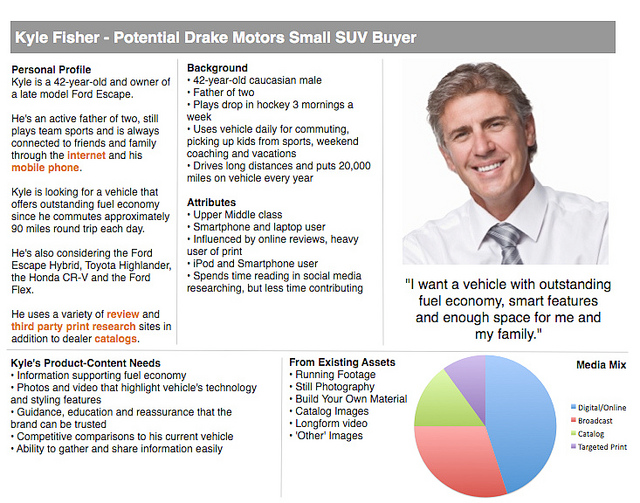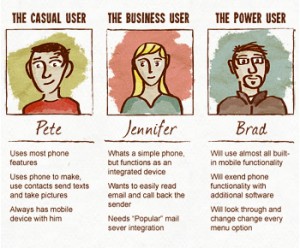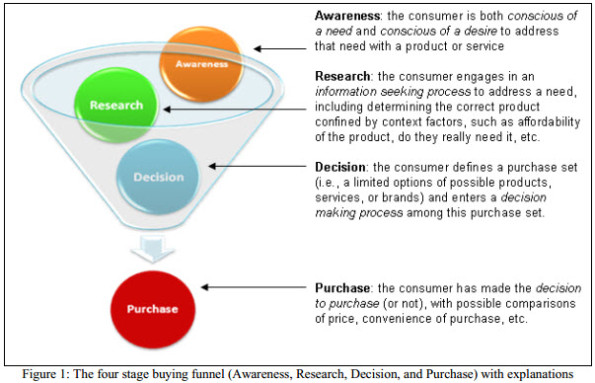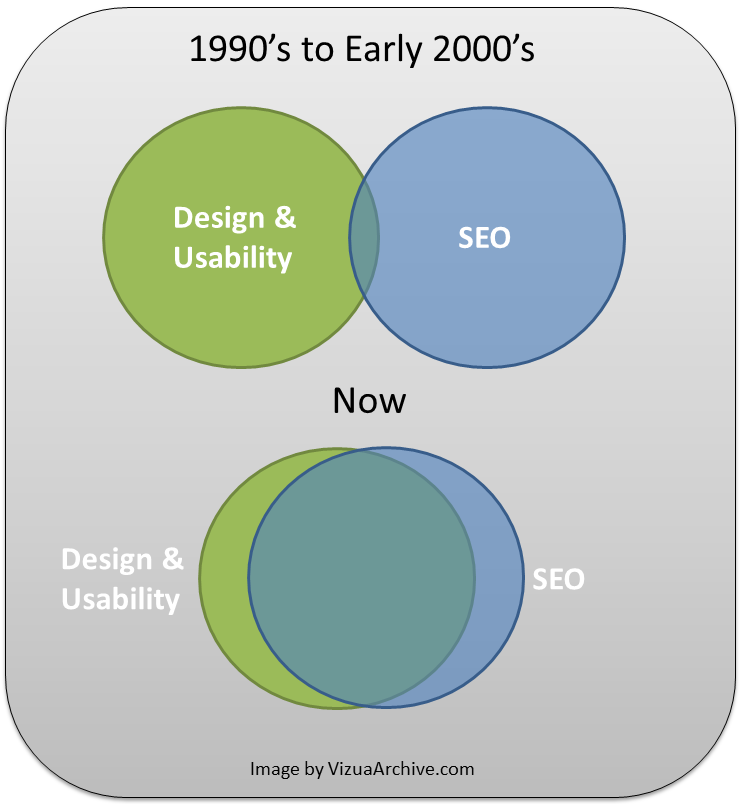
Think you know SEO? It's all about keywords, content, and optimization, right?
Not quite.
Despite what you may think you know, search engine optimization has far less to do with content, coding, or site architecture than with psychology.
The reason why people search for things in the first place is what matters. That's especially true when it comes to effective SEO.
I know, I know. You've been told time and time again to use specific keyword densities and to otherwise tweak the way in which words are arranged on the screen.
What does psychology have to do with any of it?
As today's most effective SEOs know, understanding the psychology behind why people behave the way they do plays a crucial role in establishing an effective online marketing strategy.
That applies to SEO just as much as it does to any other digital marketing channel.
I'm not telling you to get a psychology degree. All of the answers you need are available to you through effective market research and a carefully developed SEO strategy.
In the meantime, here's a quick primer on understanding the relationship between effective SEO and the psychology behind those who search for information online.
1. Know your customers
Without knowing what makes your customers tick, any marketing technique you employ is sure to fail.
As a business owner, you need to understand the people who need or who will benefit from your products and services.
If you haven't done so already, develop detailed personas for the different types of people who are likely to use your products or services.

Get the ball rolling by speaking extensively with your existing customers. What attracted them to your company? What are their pain points?
But don't stop there. Engage in market research to identify other types of people who may be viable prospects.
You will start to see patterns and similarities in people's backgrounds and motivations. Sort different types of customers into different personas.

With fully developed personas, you can paint a vivid picture of what your ideal customer looks like. This understanding will allow you to gear your content and optimization toward guiding them through to conversion.
2. Identify customer intent
In the old days, SEO revolved around identifying the words people used to query search engines and sprinkling content with the resulting keywords.
Things didn't go much deeper than that, so search engine results were clunky at best.
Today's search engine algorithms are incredibly sophisticated. Nowadays, they can assess user intent with incredible accuracy. By understanding the intent of your ideal customer, you can make major strides while engaging in SEO.
Most customers are in one of four phases: awareness, research, decision, or purchase. Their search queries will reflect that intent.

How are you supposed to know the intent of your customers? The answers lie in the personas you've developed (I hope you did).
Everyone loves options. Each persona may have a different intent, which is why it's important to produce specific types of content for specific personas.
For example, one of your personas may be mostly concerned with getting a great deal. Another's top priority may be to get their hands on what they need as quickly as possible.
Once you figure out what your customers are after, give it to them with engaging, informative content, optimized to attract their attention.
3. Address specific pain points
Giving customers the information they need increases the odds of their conversion. It is crucial to understand the issues they are trying to solve and ways your products and services can help them.
SEO is no longer about cramming content with as many keywords as possible. To be effective, your content must be useful to actual people.
Useful content concisely and effectively addresses customers' pain points, and those pain points may vary from one type of customer to the next.
During the course of your market research and through communications with existing customers, you will learn a lot about the problems your ideal customers face.
Using this information to inform your content and SEO strategy will put you ahead of the game.
For example, let's say you run a fitness supplement website.
Your research reveals that some customers' main issue involves losing weight quickly. Another large group is more concerned with building muscle.
Needless to say, producing content strictly for one or the other won't get you too far.
Therefore, the psychology of SEO demands that different types of content must be developed to address different pain points.
4. Use search engine queries
Much of the psychology of SEO is reflected in the way in which people query search engines.
Before algorithms progressed to their present level of sophistication, the best way to do so was by using a handful of short, concise search terms, which is exactly why keywords were once so crucial.
Now that algorithms consider the semantic and thematic meaning and intent of users, the way in which users query search engines has evolved. People are more conversational with their queries-they ask actual questions much of the time.
Rather than searching for “shoes for sale San Jose,” for example, someone searching Google today is likelier to type, “Where can I find shoes for sale in San Jose?”
Increasingly, they might actually ask the question out loud by querying Siri or another mobile app.
When developing your SEO strategy, consider how people will ask Google to find the products and services you provide.
Gear your content toward answering those questions. When it makes sense to do so, include long-tail keywords and key phrases that mirror how people query the search engines. Using longtail keywords in your search strategy is the only way you can gain more organic traffic.
Longtail keywords are, by far, the most commonly-used search method.

Ultimately, though, if your content is truly useful, informative, and relevant to your users, it will naturally pose and answer the proper questions.
5. Get media-rich with images and videos
An important thing to remember about user psychology is that humans are highly visual.
To really connect and resonate with your audience, your SEO strategy should incorporate images and videos whenever it makes sense.
According to studies, people process information presented in images around 60,000 times faster than text. To connect with customers quickly, which is hugely important on the Internet, it pays to include relevant images and videos.
Not just any videos or images will do, however.
For example, loading your posts with generic clipart and stock photos won't work nearly as effectively as including images and videos of actual customers or employees.
Images and videos make your SEO more effective and your content more relatable and approachable. Thanks to today's technology, they're also easy to produce.
6. User experience
In the world of SEO, a lot of attention is paid to site architecture and the way in which it affects the user experience. The two have a lot of overlap:

From an SEO standpoint, using appropriate title tags and the like and organizing content so that it flows logically helps a great deal.
By designing the layout of your site according to the psychology of your personas, you will increase the odds of converting them into actual customers.
After all, you need to make sure they interact with your site instead of merely landing on it and bouncing away.
The goal here is to ensure that the right content gets in front of the right persona at the right time.
Understanding your customers' motivations and backgrounds will make it much easier to lay out your content appropriately.
Well-optimized landing pages help guide the on-site user experience. A good landing page should target specific personas, which you can then guide according to their pain points and desires.
7. Sharing
You don't want people to merely read and digest the content you provide.
You want them to share it too. When someone shares your content, they are essentially vouching for your brand. The very act of sharing it proves they are actively engaged.
The question, though, is: what prompts people to share content in the first place?
The New York Times Customer Insight Group conducted a survey regarding this very thing, and their findings are incredibly insightful:
- 84 percent share content that supports a cause they care about
- 78 percent share content to stay connected to friends
- 69 percent share content to feel more involved in the world
- 68 percent share content to define themselves
- 49 percent share content as a form of entertainment
From this, we can conclude that the best content helps customers define themselves and their relationships to the world.
It also delivers value people want to share with others.
Shareable content is informative, interesting, and helpful. It also reflects customers' ideals.
Keep the above survey results in mind while working on SEO and content creation to increase the odds of having your content spread far and wide.
8. Keep the conversation flowing
An effective SEO strategy also considers how and why conversions happen.
A conversion doesn't always mean a sale. It can mean opting in for an email newsletter or participating in a quick survey.
What compels someone to switch from a passive website visitor to an actual customer? A huge amount of information is available online regarding how and why people convert.
Educate yourself about conversion psychology to boost the overall effectiveness of your SEO efforts and conversion optimization.
When it comes to understanding the psychology behind conversion, having a clear understanding of the sales funnel is an absolute must.
You should have content matching every stage of the funnel as well as every persona type.
Yes, this means you need a lot of content. And yes, that content must be of the highest quality.
You may have your work cut out for you, but the good news is that it will pay off in spades down the road.
9. Guidance
As much as we dislike admitting it, people are followers.
They look to each other to decide how to behave. This is just as true online as it is in person.
To motivate visitors to your site to do what you want, you must guide them. Expecting them to take the initiative is unrealistic.
I'm not saying you should “bark orders” at them through your content; rather, you should subtly guide them.
Calls to action are a prime example of guiding visitors through your site. They're definitely the most dramatic example as well.
Beyond that, it helps to consider the path your ideal customer may follow through to conversion.
For example, someone who freshly arrives on your site may be doing very initial research. Content that provides a clear but effective overview works well here.
At the end of the content, there should be additional resources to help them progress to the next stage. Every step of the way, use action words to guide users along.
Never assume they will know where to go, and don't be afraid of coming across as a little bossy.
10. Value versus cost
Humans are mostly concerned with two things when considering a solution. They ask themselves:
(1) What's in it for me?
(2) How much will it cost?
That's human psychology 101, really, and it proves to be quite useful for crafting an SEO strategy.
For the value end of things, your content must provide something your audience truly needs. This typically means providing answers, information, and guidance, so fluffy, meaningless content is absolutely useless.
As for the cost, well, most of the content on your page will be free for the taking.
However, cost involves more than money. What kinds of hoops will your customers have to jump through to get the information they need?
Ideally, content should be readily accessible. Since you can also gather crucial data about customers by having them opt in from time to time, make the barrier to entry as low as possible by asking only for a small amount of information.
If you ask them to complete a lengthy form, it's unlikely many will comply.
Conclusion
Before developing a new SEO strategy, you need to get inside your customers' heads as much as possible.
More importantly, remember that the content you create shouldn't just be geared to appeal to search engine algorithms; it should be geared toward actual humans-paying customers who want what you have to offer.
None of the above tips will get you anywhere until you invest considerable amounts of time and effort into understanding what makes your ideal customer click.
Do it now, and then craft your strategy based on what you learn.
Have you developed personas of your ideal customers yet?
No comments:
Post a Comment